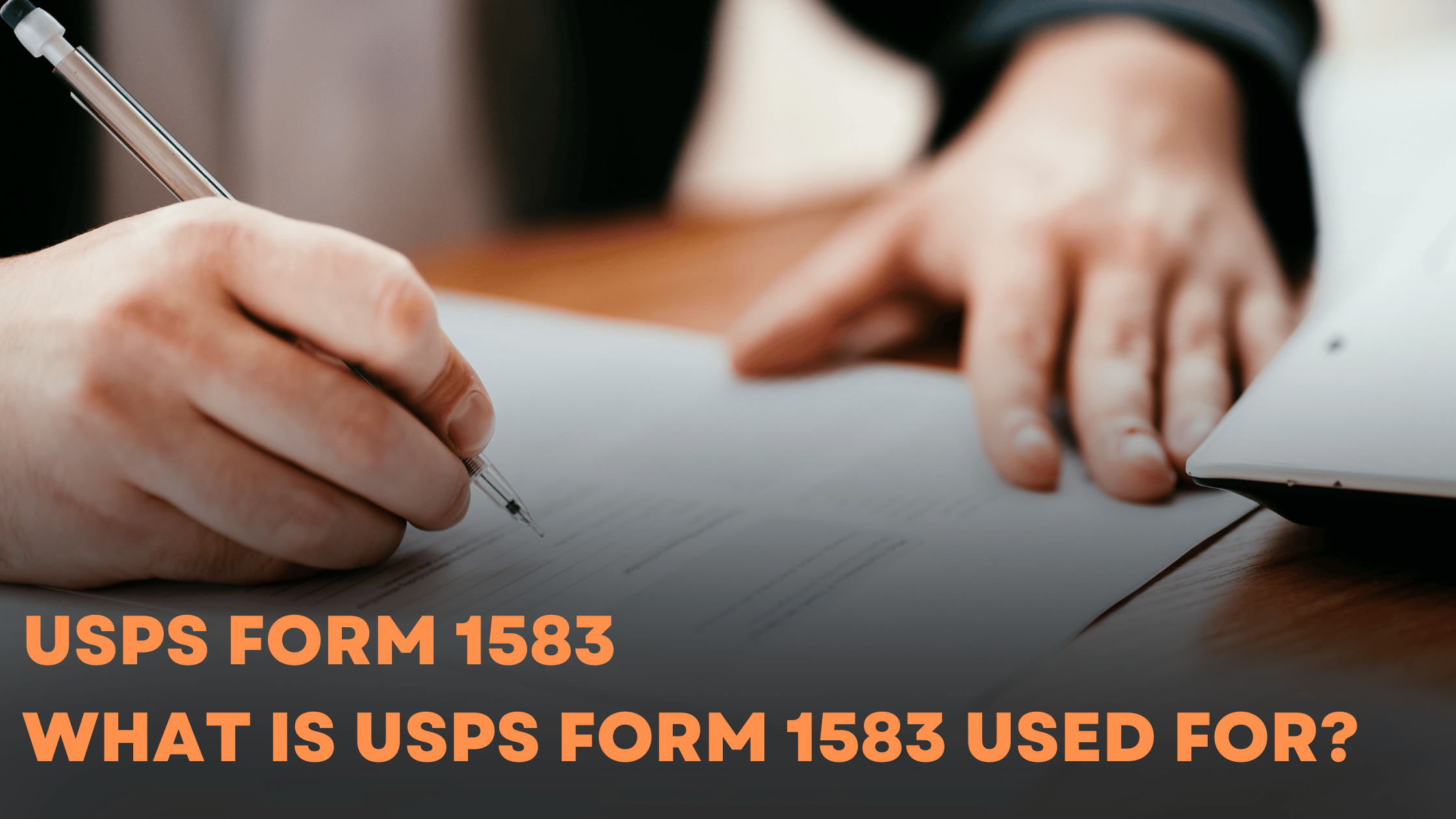USPS Form 1583, which is called the Application for Delivery of Mail Through Agent, is an essential form that all individuals and companies who want to permit a Commercial Mail Receiving Agency (CMRA) to receive and collect their correspondence should fill out. Such a form is required in most cases where an individual or company intends to utilize services such as virtual mailboxes, P.O. Boxes, or mail forwarding CMRA services.
What is USPS Form 1583 used for?
The August 2020 version of USPS Form 1583 states, on the face of it “is used to grant Power of Attorney for mail to be accepted, received, and forwarded…” Furthermore, this form was issued so that the unauthorized persons do not have access to the customer’s correspondence only the agents authorized hold the key to the mails received by the client.
In addition, it is intended to prevent individuals from misappropriating U.S. mailing addresses to facilitate crimes, fraud, and other illicit acts. There are additional concerns in terms of abuse of power by CMRA agents using the US postal system as a safeguard.
Also, the purpose of Form 1583 is to demonstrate and prove the CMRA service has addressed mail to the correct recipient and that the recipient has complied with the requirements set by the postal authorities. Not just that, it is also one of the basic protections for the recipients of the mail, while it contributes to the authority of the CMRA by enabling them to comply with the laws of the postal service.
Who Is Required To Fill Out USPS Form 1583?

The following people must complete form 1583 if they intend to use any services of a CMRA, such as:
Individuals seeking virtual mailbox services: Many CMRAs prefer that clients have their mail sent to a physical address in the U.S. without actually owning any real estate.
Businesses operating without a physical address: A person who operates a home office, a digital nomad, or a business that needs a registered address but works completely online or from multiple locations.
International users needing a U.S. mailing address: People or businesses as non-residents who wish to get their letters in the USA, and then send them to any address outside the USA should use CMRA and file Form 1583.
By submitting the form, applicants permit the CMRA to act on their behalf as an authorized recipient of mail. In the absence of this form, it is illegal to send or receive mail through a CMRA intended for any person or business.
Requirements for Completing Form 1583
There are several important steps and requirements that one has to observe to complete the USPS Form 1583 correctly:
Documents of Identification: At least 2 forms of identification must be met for applicants. These are generally:
- Primary Identification: It can be a driver’s license, passport, or US military ID which is issued by the US government.
- Secondary Identification: Such as a utility bill, a lease agreement, bank statement, insurance statement, or any other document that shows the present address.
Notarization: The particular form must be signed, stamped, and affirmed in front of a licensed notary public. Notarization is a true necessity as it assures the accuracy of information submitted about the applicant and also that the applicant is who he claims to be. This step is intended to be a safeguard against fraudulent representations.
Submission: In case of notarization, the entire form 1583 completed and signed has to be forwarded to the CMRA for further action. Submission could be made through email, post mails, or Facsimile by the CMRA’s stated peculiarity. Even so, the CMRA’s limitations allow receipt of customer mail but processing or forwarding is not yet an option until the numbered form is submitted.
Key Sections of USPS Form 1583
The USPS Form 1583 on the other hand contains or comprises several segments which include the following;
Private Mailbox Information: This section requires the fill-in of the relevant particular of the CMRA postal address such as the number of the box and the opening date of the box with a mailbox. It substantiates the affiant’s embrace of CMRA.
CMRA Information: In this section, it’s necessary to provide the name, address, and contact information about the CMRA. It also certifies that the CMRA is empowered legally to conduct mail on behalf of the applicant.
Applicant Information: This part has the personal details of the applicant such as complete name, physical address, telephone number, and mail e-mail. It also inquires about the nature of the applicant’s business or personal mail needs.
Authorized Signature: The applicant should endorse the form with a signature to give authority to the CMRA to be their main representative. This signature should be notarized.
Important Notes About USPS Form 1583
Not a Mail Forwarding Form: It is important to note that this is not MMS- Form 1583 which allows forwarding mail to postal address. The only function that this form has is that it permits CMRA to accept mail on customers’ behalf. Moving Mail from a permanent address to another location requires a USPS change of address form which is a different form.
Validity and Renewal: USPS Form 1583 has no expiration if the applicant continues to use the CMRA services without any critical changes in the information provided by the applicant. In case some changes happen, for example, an applicant moves house or changes the name of their company, the application must be updated and re-submitted again. A renewal may be applied in situations where the personal-detail change or US Postal policies change and require it.
Protection Against Fraud: 1583 is a measure of protection. If the US Postal Service keeps records about who used a particular address sorting center, that person must be authorized to prevent fraud or identity theft from happening. It makes sure that the P.O. box numbers and CMRA services are not abused and safeguards their use.
How to Submit Form 1583
Notarize the Form: Submission of the form will not occur until an individual notarizes it. This measure gives assurance that the person submitting the form is the person whom they assert to be.
CMRA Submission: The completed form must be mailed to the CMRA within the span of the notary session. The CMRA has a copy of this form for reference while the USPS has a copy for reference as well.
Other Methods to Submit: In certain instances, however, CMRA services can be utilized to upload completed and notarized forms. Check with the CMRA online as to what procedures to follow when submitting the above form.
Conclusion
As has been seen above, Fill out USPS Form 1583 if you want to use a CMRA as your mailbox. Reliably, filling out and filing this document is one of the best things to do when needing to utilize mail services such as basic personal mail, business, or international packages since it is safe and legal.
The fact that notary services must be used reasonably ensures authenticity and trust for the processes while the purpose of the document itself is to shield the customer and the CMRA from any dishonest or ill-willed fraudulent active or passive attempts. It cannot be emphasized enough that all of the instructions regarding USPS Form 1583 are to be followed and respected to avoid unnecessary and illegitimate operations with mail when CMRA services are utilized.











